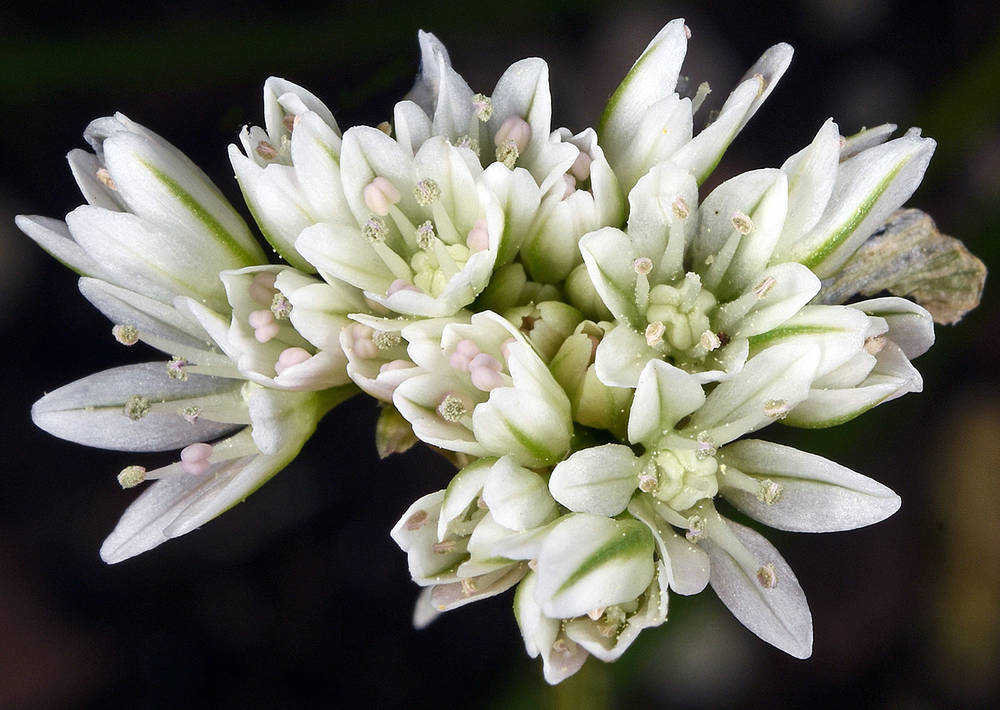Allium madidum
Allium parvum
swamp onion
dwarf onion
1–3; larger bulbs each usually with cluster of 10–30 easily detached bulbils to one side of base, globose to ovoid;
outer coats enclosing 1 or more bulbs, membranous; without fibers.
1–5+; renewal bulbs formed within coats of parent bulb; ovoid to more or less globose;
outer coats enclosing 1 or more bulbs, membranous, lacking cellular reticulation or cells arranged in only 2–3 rows adjacent to roots; more or less quadrate; without fibers.
persistent, green at anthesis, 2;
blades solid; flat or channeled, 10–25 cm × 1–4 mm.
usually deciduous with scape, withering from tip at anthesis, 2;
blades solid; flat; more or less falcate, 8–15 cm × 1–5(6) mm.
persistent; solitary; erect; solid; more or less terete, sometimes ridged, 10–20 cm × 1–2 mm.
usually forming abscission layer and deciduous with leaves after seeds mature; solitary; erect; solid, flattened, frequently more or less winged distally, or; in smaller specimens; more or less terete, 3–12 cm × 0.5–2 mm.
persistent; erect; compact, 10–20(40)-flowered, hemispheric;
pedicels 5–12 mm;
spathe bracts 2.
persistent; erect; compact, 5–30-flowered, hemispheric to conic;
pedicels 3–12 mm;
spathe bracts 2.
6–10 mm;
tepals erect or more or less spreading, white with prominent green or pink midveins, lanceolate; more or less equal;
margins entire;
apex obtuse to acuminate, becoming involute at tip;
stamens included;
ovary crestless or obscurely crested with 3 minute processes;
stigma unlobed or slightly lobed.
6–9 mm;
tepals erect, slightly spreading toward tips, oblong to elliptic, unequal, white or tinged with pink, with broad; dark; reddish purple or brown midvein; outer longer; wider than inner;
margins entire;
apex obtuse to more or less acute;
stamens included;
ovary obscurely crested with 3 low processes;
stigma scarcely thickened, unlobed or obscurely 3-lobed.
=28, 42.
=14.
Allium madidum
Allium parvum
Open mixed conifer forests, gravelly seeps, seasonally wet meadows and scablands. Flowering May–Jul. 1000–2200 m. BW. ID. Native.
Rocky, clay slopes and talus, seasonally moist scablands and rocky slopes. Flowering Apr–Jun. 300–2200 m. BR, BW, Casc, Col, ECas, Lava, Owy, Sisk. CA, ID, NV; southeast to Utah. Native.
Nick Otting, Richard Brainerd, Barbara Wilson
Nick Otting, Richard Brainerd, Barbara Wilson





